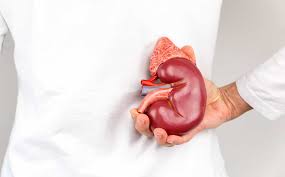Article
Immunotherapy Data is Encouraging in Kidney Cancer
Author(s):
Elizabeth Plimack, M.D., discusses an update on the CheckMate-025 trial, comparing Opdivo to Afinitor in patients with metastatic renal cell carcinoma.
Patients with metastatic renal cell carcinoma (RCC) saw a 26 month or longer benefit with Opdivo (nivolumab) versus Afinitor (everolimus) in the pivotal CheckMate-025 trial.
“At two years, we have 52 percent of patients on the Opdivo arm still alive. Again, the curves continue to remain separated and it looks like there is a bit of a plateau as well. There’s no new safety signal as patients get further out so that is also encouraging,” Elizabeth Plimack, M.D., lead author of the two-year efficacy update, said in an interview with CURE at the 2016 Kidney Cancer Symposium.
Based on the primary analysis of CheckMate-025, the FDA approved Opdivo in November 2015 as a treatment for patients with metastatic RCC following prior antiangiogenic therapy. In the initial trial findings, Opdivo improved median overall survival (OS) by 5.4 months versus Afinitor.
CheckMate-025 randomized 821 pretreated patients with advanced or metastatic clear-cell RCC in a 1 to 1 ratio to Opdivo or Afinitor. Of the randomized patients, 803 received treatment. Opdivo was administered intravenously at 3 mg/kg every two weeks (406 patients) and Afinitor was given orally at 10 mg daily (397 patients).
The long-term data showed that at a minimum follow-up of 26 months, the median OS was 26 months with Opdivo versus 19.7 months with Afinitor. The one-year OS rates were 76 percent with Opdivo versus 67 percent with Afinitor. The two-year OS rates were 52 percent versus 42 percent, respectively. The overall response rate was 26 percent with Opdivo compared with 5 percent with Afinitor.
There were no new safety signals and treatment-related adverse events (AEs) remained lower with Opdivo. All-grade AEs occurred in 79 percent of patients receiving Opdivo and 88 percent of patients treated with Afinitor. Grade 3/4 AEs occurred in 20 percent and 37 percent of the two arms, respectively.
Please provide an overview of your CheckMate-025 trial update.
In her interview, Plimack, chief of the Division of Genitourinary Medical Oncology and Director of Genitourinary Clinical Research, associate professor, Department of Hematology/Oncology, Fox Chase Cancer Center, discussed the two-year data, as well as the remaining questions with Opdivo in this setting.We have a poster here presenting data for Opdivo for the CheckMate-025 trial. That was the randomized trial comparing Opdivo to Afinitor. We have data now with the minimum follow-up of 26 months for all patients. What's interesting is we're seeing preserved overall survival benefits.
What are the key remaining questions with Opdivo in this setting?
How do you decide if a patient should receive Opdivo over another therapy in this setting?
At two years, we have 52 percent of patients on the Opdivo arm still alive. Again, the curves continue to remain separated and it looks like there is a bit of a plateau as well. There’s no new safety signal as patients get further out so that is also encouraging. Of the patients who responded to Opdivo in the trial, almost a third of their responses — 29 percent — have been maintained now at over two years. For this second-line trial, the median overall survival was 26 months, which was coincidentally the same as the minimum follow-up. That’s the longest survival we've seen in this setting overall.We don't know exactly when to give it, how to give it in combination, or where it works best. I think the one thing we do know is that our goal is durable response and cancer control, whether or not achieving this requires chronic treatment is not yet known. It's not clear yet that we're seeing that, although time will tell, when we're 10 years out from the first Opdivo studies, then we'll really know how durable these responses are. But right now, for this randomized trial of Opdivo in the second-line setting, we are two years out, so we have the benefit of data for that length of time and it's encouraging to see that patients are still doing well and there does appear to be a tail emerging on the curve.I think it's tricky. There are a lot of different options. There are more TKI options — there’s the TKI combination with Lenvima (lenvatinib)/Afinitor and the TKIs Cabometyx (cabozantinib) and Inlyta (axitinib) are still players — and then of course Opdivo.
The key in my practice is whether they had a nice response to their frontline TKI. If they did, I try to squeeze more out of that TKI pathway with another TKI approach. I think if they blew right through it, moving to Opdivo makes sense.




